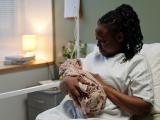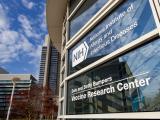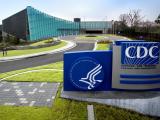Feb 21, 2012 (CIDRAP News) – The chair of the US biosecurity advisory board that recommended withholding details of two studies on H5N1 virus transmissibility today expressed a mixed reaction to last week's international meeting in which scientists and officials involved in the controversy called for eventually publishing the full studies.
Paul S. Keim, PhD, chair of the National Science Advisory Board for Biosecurity (NSABB), said he was pleased that the international group favored extending a current moratorium on research on lab-generated H5N1 viruses, but he was disappointed that it opposed publishing the papers in redacted form in the near future.
Meanwhile, Keiji Fukuda, MD, the World Health Organization (WHO) official who led the meeting, in an e-mail message to scientists after the meeting, said the session was not intended to "second guess" any previous meetings.
The WHO organized the meeting, held Feb 16 and 17 in Geneva, as a first step to sort out issues raised by two US-funded studies in which researchers generated mutant H5N1 viruses and reassortants that spread among ferrets by airborne droplets, unlike natural H5N1 strains. The studies have triggered concern that the viruses, if unleashed, could cause a devastating human pandemic.
In December the NSABB recommended that Science and Nature, the journals intending to publish the studies, omit key details that could allow others to replicate the experiments. The US Department of Health and Human Services endorsed the recommendation.
The journals subsequently signaled they would go along with the advice if, as also recommended by the NSABB, a way could be found to provide the details to scientists with a legitimate need for them.
The ensuing debate included calls for international discussions on the regulation and dissemination of "dual use" life-sciences research, and Fukuda announced in January that the WHO would organize a meeting. He is assistant director-general for health security and environment at the agency.
Shortly after that, on Jan 20, 39 leading flu scientists from around the world announced a 60-day moratorium on research leading to the generation of H5N1 viruses with increased transmissibility in mammals. The signers included the lead authors of the two controversial studies, Ron Fouchier of Erasmus Medical Center in the Netherlands and Yoshihiro Kawaoka of the University of Wisconsin.
At last week's meeting, a group of public health and flu experts invited by the WHO agreed that the research moratorium should continue but that the two studies should be published in full at a later date, the WHO announced after the meeting. The group recommended that publication should be preceded by an effort to increase public awareness and understanding of the studies and the rationale for publishing them and by a review of the related biosafety and biosecurity issues.
Participants in the meeting included Keim, Fouchier, and Kawaoka, among others. Keim, a microbial geneticist at Northern Arizona University, and Anthony Fauci, MD, director of the US National Institute of Allergy and Infectious Diseases, were the only participants who disagreed with the recommendation to publish the full studies, according to previous reports.
Keim offered some reactions to the meeting today in an e-mail to CIDRAP News, commenting, "The meeting was a very important part of the global dialogue that is needed on this topic. This is an important group of flu scientists and their opinion is critical. They are, however, only part of the global community that needs to be engaged, and more meeting are in the offing.
"I was pleased that they recommended extending the moratorium on research and that they would not be pushing for publication of the work during this time frame. It also became clear that additional biosafety and biosecurity reviews have or are being performed at these institutions [involved in the research]. Given the phenotypic changes in the pathogen, this seems appropriate.
"I was disappointed that they did not want to publish the redacted papers quickly and during the moratorium," Keim added. "NSABB thought that redacted publication could help guide policy makers toward increasing the flu-fighting infrastructure."
In a statement issued after the meeting, the WHO said the meeting participants opposed publishing the redacted manuscripts mainly on the grounds that it would be too difficult to quickly find a way to share the full details with scientists in need of them, given the legal complexities involved.
Fukuda described the results of the meeting in a press briefing at its end. Later, he commented further on several aspects of the meeting in an e-mail that he sent to a number of scientists. Laurie Garrett, PhD, senior fellow for global health at the Council on Foreign Relations, posted a copy of the message on her blog (see link below).
In the message, Fukuda said he was aiming to provide "perspective and insight" on the meeting. He said the reason for holding the session in secrecy was that it included a review of sensitive unpublished data that are "at the heart of the controversy." The participants were chosen largely because they had some role in the research or in sending the original viruses to the WHO or because they were "considered to have a potential role in implementing solutions."
Echoing some of his pre-meeting comments, Fukuda said the meeting was not intended to be a "broad debate on the relative merits of research and publication versus security or safety as many seem to have assumed." Rather the aim was to focus on the "most acute issues," mainly "what can be said about the manuscripts / information and . . . what can be agreed upon related to the new lab modified H5N1 viruses held at the two universities and research on them."
"Moreover, the starting premise was that research and availability of information is essential but that research takes place in a social context and that social safety and security concerns are of equal importance," he added.
"Therefore, we did not enter into a debate over the respective perspectives but said the real issue is [to] find ways in which both concerns can be balanced and accommodated. Importantly, the meeting was not set up to discuss or second guess . . . other previously held discussions or meetings."
WHO spokeswoman Christy Feig, MPH, cautioned today against assuming that Fukuda's message was intended to counter any specific criticisms or misinformation about the meeting.
"Don't read too much into Keiji's e-mail," she commented. "He was simply trying to communicate to a larger group in the scientific community about the outcome of the meeting since it ended late on Friday. He received an e-mail with a link to a news story about the meeting and the e-mail was to a large group, so he just used it as a moment to report out to them the outcome and context of the meeting."
Garrett, in comments to CIDRAP News, said she had no inside information, but she speculated that Fukuda and the WHO might have been criticized for overstating the degree of consensus at the meeting. She said the debate has put the WHO in a very difficult position and noted that Fukuda repeatedly described the meeting in terms such as "heated" and "difficult."
"My sense is that he erred in saying that the six resolutions that WHO has posted on its website were 'unanimous,'" Garrett said. "Even the word 'consensus' is dicey, as some use the word to mean unanimity, while others use it to mean the majority of a group felt a particular way (a vote, without voting). Blowback may have come from meeting participants when they read press coverage, especially for the Americans that were described as going along with a position that contradicted NSABB."
She added that Fukuda hesitated when he was asked directly whether NSABB members had supported a position contrary to that of their own committee.
See also:
Feb 17 CIDRAP News story "WHO H5N1 study group extends moratorium, calls for full publication"


















